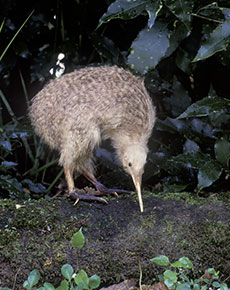NZ a world leader in island conservation, says new research

An international study has shown that mammal eradication on islands has delivered great conservation gains for New Zealand’s native species and island biodiversity.
The research was part of a global effort across eight countries to assess the value of removing invasive mammals, such as rats, goats and cats, as a conservation measure. The results were published earlier this month in prestigious journal PNAS, and point to clear benefits for endangered fauna.
596 native populations were found to have benefitted from the island eradications studied, and half of these populations are from New Zealand.
AUT Associate Professor David Towns, who was a contributing author of the journal article, hails the research results as a big win for the country. “This shows we are doing really well to save threatened native species. Our eradication successes and resulting conservation initiatives place New Zealand at the forefront of island conservation globally,” he says.
Rangitoto, Little Barrier and Tiritiri Matangi were among the New Zealand islands studied, and birds such as Kiwi and Kākāpō responded especially well. Other native species that benefitted included Tuatara and Giant Wētā.
While most small islands in New Zealand have been cleared of introduced mammals, there is still much work to be done.
“We don’t know how many threatened populations have genetic problems, how to deal with the complex issues of problem species on large islands inhabited by people, or how the technologies and results achieved on islands can best be transferred to sites on the mainland,” says Associate Professor Towns.
“Some of these questions are now being studied by researchers here at AUT’s School of Applied Sciences,” he says.